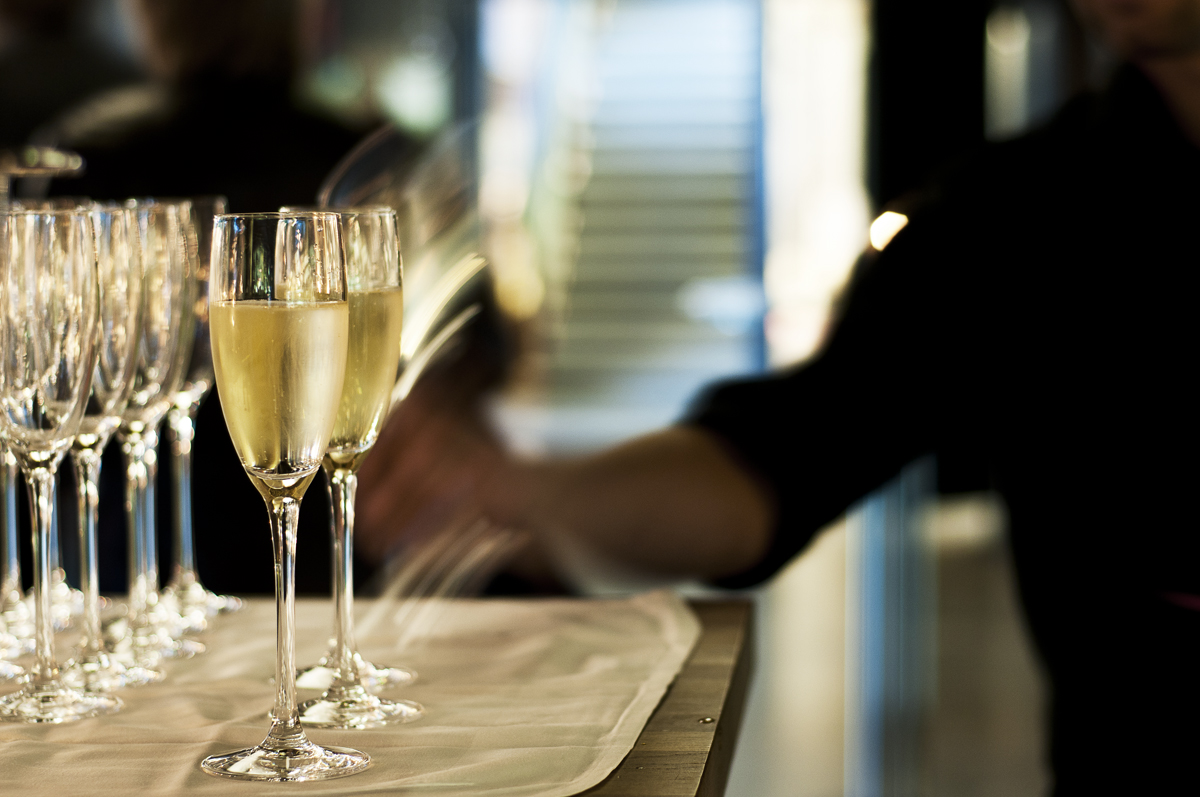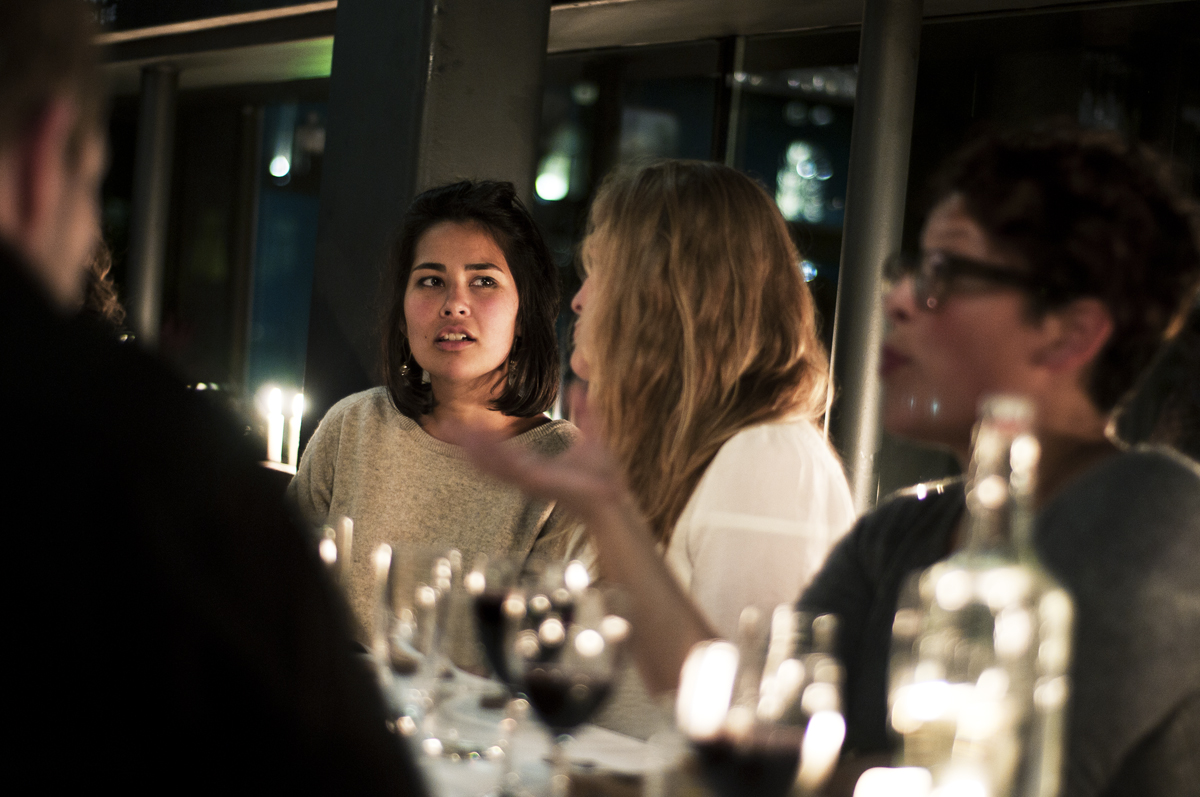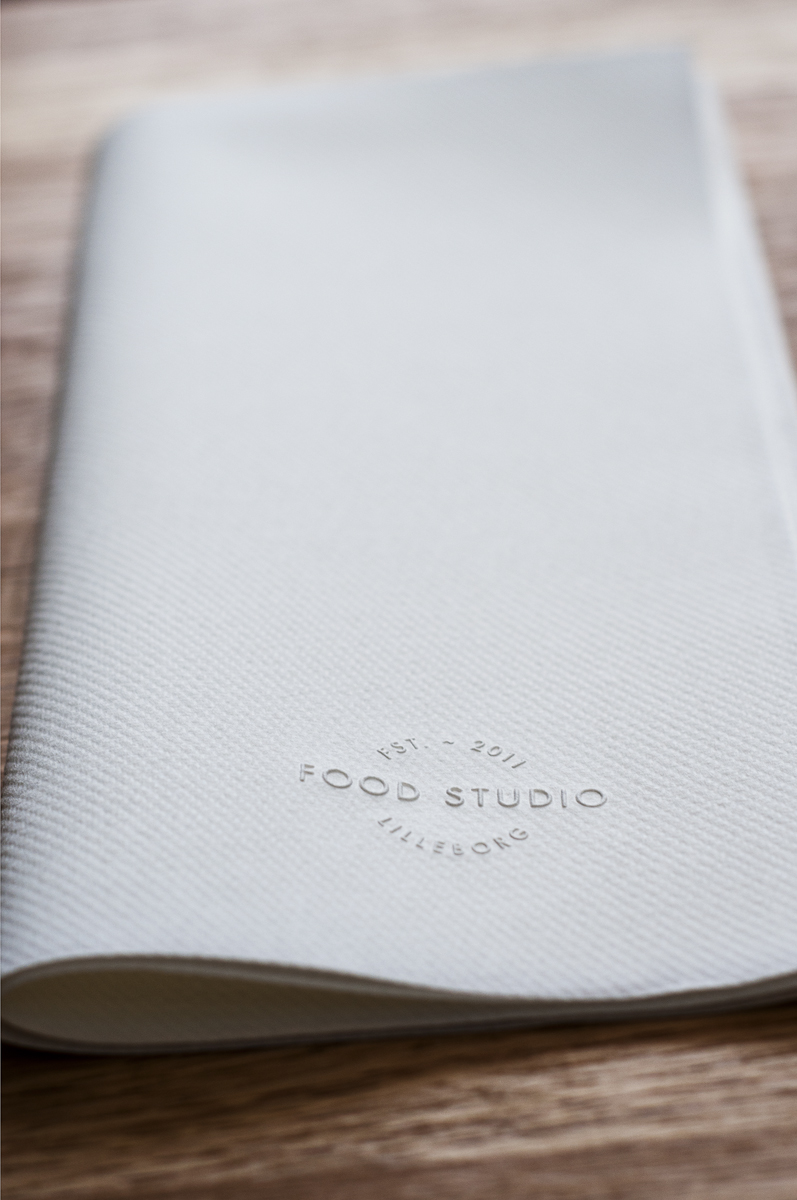Recipe
DOGA
— In the Designer's Stomach
Magne was invited as he is both an excellent cook and is also a talented graphic designer from the agency Dot Grid.
The tables of the evening were set in typical Food Studio style, with long tables, encouraging good conversation between people meeting each other for the first time.
The menu of the evening:
Oyster and leek
Smoked haddock with eggs
Cheese with yellow and red beetroot
Plum compote with elderberry sorbet, vanilla ice cream and muesli
The recipes are intended for four persons, unless otherwise stated.
Oyster and leek
Not many people know that Norway has terrific oysters. The temperature in the water differs a lot from winter to summer, so the oysters grow slowly, and can use around five years to become ready for consumption. This creates a rich taste and great quality.
One oyster per person (try using Norwegian oysters if you can get a hold of them)
Leek
Cut the leek in sticks and fry most of it in butter.
The rest you put in the oven until it is black and burned.
Oyster sauce:
2 shallots
100 ml dry apple cider
2 tbs apple cider vinegar
15 g butter
50 ml water from the oysters
25 g cream, whipped
1 egg yolk
Finely chop the onion, fry it on medium heat in the butter until it softens a bit and becomes shiny, without getting any colour. Add the cider and vinegar and let it reduce. Sift the water from the oysters and add it to the reduction. Let it reduce a little more.
Put the egg yolk in a bowl, sift the reduction in while stirring. Put the bowl in a saucepan over hot water, without letting the water touch the bottom of the bowl. Whisk constantly until it thickens. Don`t let it get too hot, or else the egg will coagulate. You should always be able to put your finger into it without burning it. Fold in the whipped cream and salt to taste.
Open the oyster and smell it to make sure it is fresh. It should smell like clean seawater. Loosen it and remove it from the shell.
Serve the oyster on a bed of butter steamed leek and pour over some warm sauce. Garnish with a little of the burned leek.
Smoked Haddock with eggs
This dish is a reconstructed version of a traditional Norwegian dish the chef Magne used to eat as a child; smoked haddock and boiled carrots served with a sauce made of hardboiled eggs and butter. Funnily enough, Magne wasn`t too fond of this dish as a child. Now it is one of his favorites; it takes him right back to his childhood in an instant.
Ballotine of white fish and smoked haddock:
400 g white fish (like Pollack, cod, whiting, coalfish)
100 g smoked haddock, in small pieces
60 g egg whites
350 ml cream
Salt, pepper
4 organic eggs
Clean the fish and cut in pieces. Put the pieces in a blender and mix until the fish gathers into a ball. Add the egg whites, and mix it until it gathers into a ball again. Add the cream, to big pinches of salt and some pepper. Work fast, to make sure you keep the ingredients cold the whole time. The fish farce should be firm. Push it through a sieve to get rid of small bones etc. Mix in small pieces of smoked haddock.
Poach the eggs inside the eggshell on 63 degrees Celsius for 1 hour. Cool down and remove the whites carefully, so you are only left with the yolks.
Fill the bottom of a soufflé mold with the fish farce, add the poached egg yolk, and cover it with more fish farce. Bake in water-bath in the oven at 180 degrees until it settles a bit.
2-3 organic carrots
Slice the carrots really thin lengthwise, either using a mandolin or a potato peeler. Dry them off. Fry them in oil at 180 degrees until golden.
100g chanterelles
Sauté the chanterelles in butter and add salt and pepper to taste.
16 freshwater crayfish
2.5 l water
55g salt
Dill
Boil up water, salt and dill and put the crayfish in the water. Turn down the heat and let it simmer for about 10 minutes. Cool down and rinse.
Sauce:
250 g butter
2 hardboiled eggs
Clarify the butter, chop the eggs in small pieces, and add to the butter.
Serve the ballotine on a plate with the crayfish, the butter sauce and the chanterelles. Garnish with the crispy carrots on top.
Cheese with red and yellow beetroot
When the yellow beetroot is baked, the flavor becomes sweet, with a hint of caramel. The prize winning salty blue cheese “Kraftkar” from Tingvollost matches the sweetness perfectly. For the red beetroot, an unpasteurized goat cheese from Aurenes gardsysteri, “Knudenost” balances the earthy taste of the beetroot.
1 red beetroot
1 yellow beetroot
Bake the beetroots on a bed of coarse sea salt until tender. Cool down.
Sea-buckthorn syrup:
50 g sea-buckthorn (Orange can substitute)
25 g sugar
25 g water
Boil the sea-buckthorn, sugar and water for a couple of minutes. Press the berries through a sieve and boil the syrup until a slightly thick consistency.
80 g Kraftkar (To substitute: some other salty blue cheese)
80 g Knudenost (To substitute: chevre)
Peel the baked beetroots and cut them into pieces. Temper the cheese in room temperature an hour or so. Cut it in pieces.
Serve some pieces of the baked beetroots with the cheese on a plate and drizzle with the syrup.
Plum compote with elderberry sorbet, vanilla ice cream and muesli
The season for plums in Norway is short, but the plums are amazing. They have the whole (sometimes quite cold) summer to ripen, which gives them a complex and deep taste, with a sweet flesh and some acidity left in the skins.
To accompany the compote the chef made a sorbet on elderberries, a berry we don`t use that often anymore, but which is said to have a salutary effect. To balance the acidity this dessert was served with a quenelle of vanilla ice cream and some muesli to give a bit of texture.
Plum compote:
10-12 Norwegian plums (f ex Jubileum or Opal)
100 g sugar
1 dl water
1 ts maizenna (corn flour)
Cut the plums in halves and remove the stone. Boil the plums with the sugar and water on low heat until the plums are tender and starting to break apart. Dissolve the maizenna in a bit of cold water and add to the compote. Bring to a boil, and boil for a minute until it thickens. Cool down.
Elderberry sorbet:
This recipe will make a little bit more than you need for 4 persons.
50 g sugar
50 g water
1 tbs glucose syrup
1 l Organic elderberry drink (f ex from Safteriet)
1/2 lemon, squeezed
Boil up the sugar, glucose syrup and water. Mix with the elderberry drink and the lemon juice. Freeze in an ice cream machine.
Vanilla ice cream:
This recipe will give you a bit more than what you need, but there is no such thing as “too much ice cream”.
0, 5 l milk
0, 5 l cream
2 vanilla pods
50 g glucose syrup
240 g egg yolks
250 g sugar
2 leaves of gelatin
Soak the gelatin sheets in cold water. Boil up the milk, cream, vanilla and glucose. Strain the water from the gelatin and add the gelatin to the hot milk mixture. Whip the egg yolks and sugar in a machine until it is white and fluffy. Pour in the hot milk mixture in to the eggs while whipping. It is important that the milk is still really hot, or else the ice cream will have a taste of raw eggs. Cool down and freeze in an ice cream machine. This way of making ice cream gives a lighter texture.
Muesli:
100 g sugar
100 g water
50 g honey
1 vanilla pod
50 g neutral oil
Heat until the sugar and honey dissolves.
50 g sunflower kernels
100 g oatmeal
50 g sesame seeds
150 g roughly chopped pistachios
250 g roughly chopped hazelnuts
Pour the syrup over the dry goods and roast in the oven at 160 degrees until golden. Stir every once in a while.
Serve the compote with the sorbet, the ice cream and the muesli. For decoration you can use thin curls of green apple.






